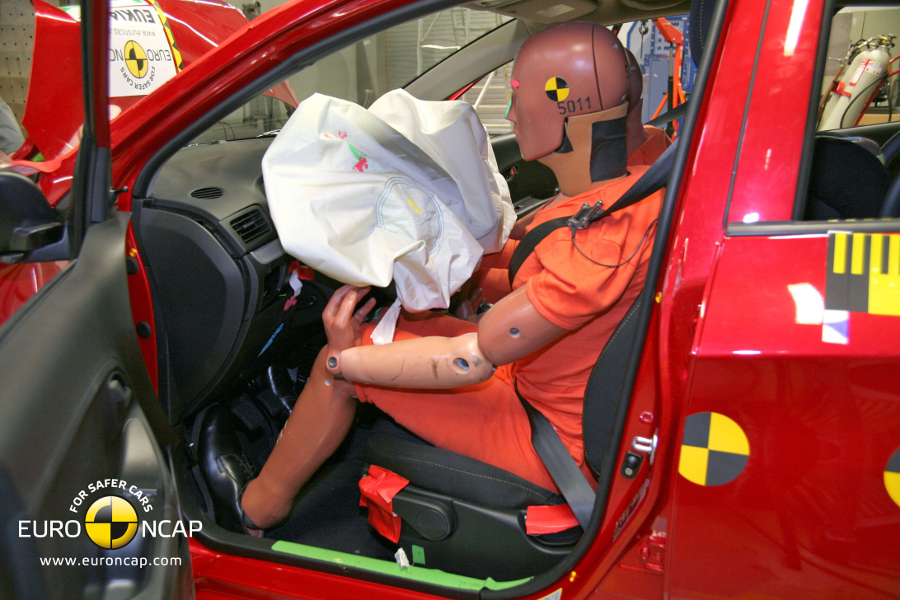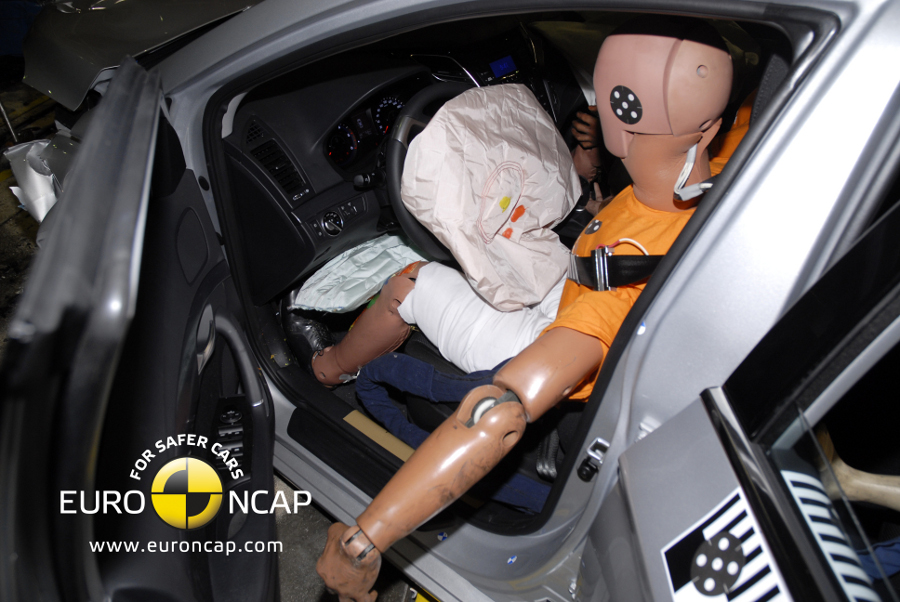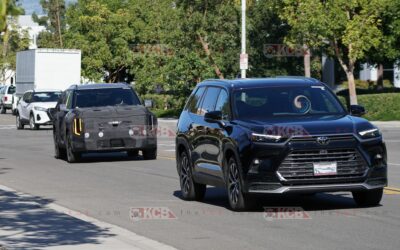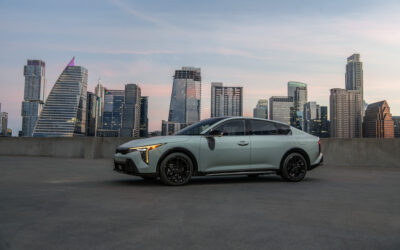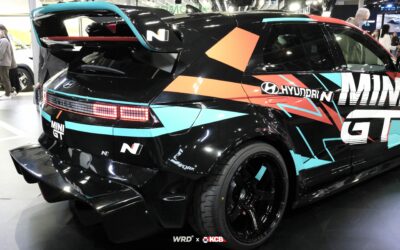–Kia Picanto 1.0 LX:
Adult occupant.
The passenger compartment of the Picanto remained stable in the frontal impact. Dummy readings indicated good protection of the knees, femurs and pelvis of both the driver and front passenger. Kia demonstrated that a similar level of protection would be provided for occupants of different sizes and to those sat in different positions. Most body regions were well protected in the side barrier test, with adequate protection of the chest. However, the rear door on the struck side opened during the test and the car was penalised. In the more severe side pole test, the door remained fully latched. Dummy readings of rib deflection indicated marginal protection of the chest. The seat and head restraint provided marginal protection against whiplash injuries in the event of a rear-end collision.
Child occupant.
Forward movement of the 3 year dummy, sat in a forward-facing restraint, was not excessive and both the 3 year and the 18 month dummies were properly contained in the side impact test. The front passenger airbag can be disabled to allow a rearward-facing restraint to be used in that seating position and the Picanto provides clear information to the driver regarding the status of the airbag. A permanently attached label gives a clear warning of the dangers of using a rearward facing seat in the passenger seat without first disabling the airbag.
Pedestrian.
The bonnet was rated as poor or marginal in most areas likely to be struck by a pedestrian’s head. Similarly, the front edge of the bonnet did not provide good protection for pedestrians’ legs. Only the bumper scored maximum points, offering good protection for pedestrians in all areas tested.
Safety assist.
Electronic stability control is available as an option on the Picanto. However, its sales as standard equipment are not expected to meet Euro NCAP’s 2011 requirements and the system was not assessed. A seatbelt reminder is standard equipment for the driver, front passenger and rear seats.
Click here to view the .pdf with complete information.
———————————————————————————————————————————–
– Hyundai i40 Crossover Wagon 1.7 CRDi GLS:
Adult occupant
The passenger compartment of the i40 CW remained stable in the frontal impact. A driver knee airbag is standard equipment and dummy readings indicated good protection of the knees, femurs and pelvis for both front seat occupants. The steering column was considered a potential risk but Hyundai demonstrated that other parts of the facia offered good protection. The i40 scored maximum points in the side barrier test and provided adequate chest protection in the more severe side pole impact. The seat and head restraint provided good protection against whiplash injuries in the event of a rear-end collision.
Child occupant
Forward movement of the 3 year dummy, sat in a forward-facing restraint, was not excessive and both the 3 year and the 18 month dummies were properly contained in the side impact test. The front passenger airbag can be disabled to allow a rearward-facing restraint to be used in that seating position and the i40 provides clear information to the driver regarding the status of the airbag. A permanently attached label gives a clear warning of the dangers of using a rearward facing seat in the passenger seat without first disabling the airbag.
Pedestrian
The protection offered by the bonnet was predominantly poor or marginal. The front edge of the bonnet also offered mostly poor or marginal protection to pedestrians. Only the bumper scored maximum points, offering good protection to pedestrians’ legs.
Safety assist
The i40 is equipped with electronic stability control (ESC) as standard equipment. A driver-set speed limitation device is optional on low grades but its sales as standard equipment on higher grade models are exepcted to exceed Euro NCAP’s 2011 requirements. A seat belt reminder is standard for both the driver and front seat passenger.
Click here to view the .pdf with complete information.

